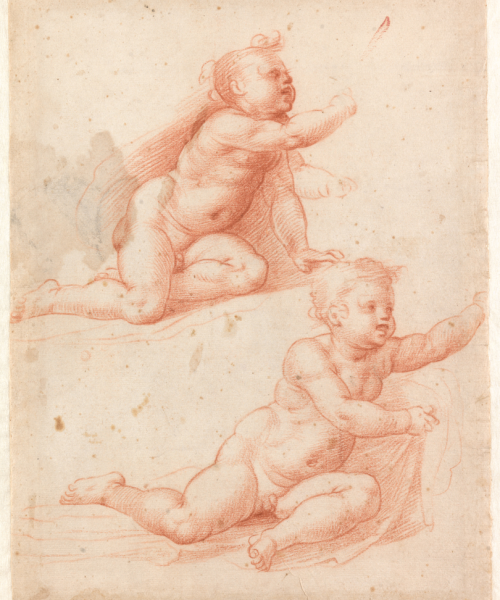The Renaissance, a thriving cultural period between 1400 and 1600
Italian artists such as Leonardo da Vinci, Michelangelo and Jacopo Tintoretto intensely studied the human body and were inspired by the example of ancient Greece and Rome. Every region, city or even artist’s workshop developed its own unique style. Drawing was the foundation of all artistic activity, with artists making drawings to prepare their paintings, altarpieces and frescoes and to capture the human figure in different poses. Drawings often carry the traces of their use in the workshop, such as splashes of paint or oil, or squared lines that helped the artist to enlarge a figure for a fresco directly onto the wall. Renaissance drawings were treasured by later collectors, who wanted to have works by the most important artists in their collections.






